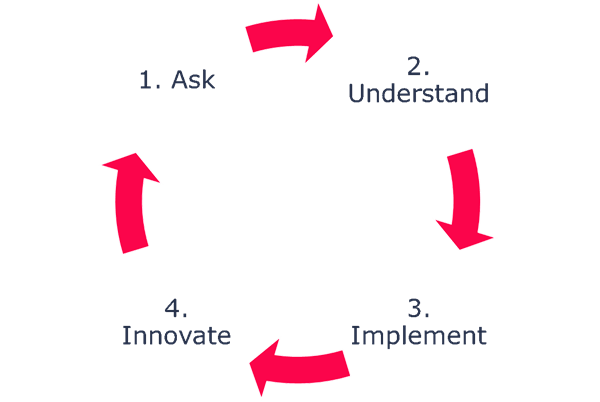Wait, what is customer experience?
Customer experience (CX) is simply the aggregate effect of all the interactions a customer has with your organization. For B2B organizations, whether you are in marketing, sales, or success, this starts at the top of the marketing funnel through to renewal (and for many orgs includes interactions with the supply chain).
Why does it matter?
It might seem almost self-evident, but improvements in customer experience generate more and better leads, drive faster sales cycles, increase average revenue per account, and reduce churn. And for the most part, the customer experience is within the enterprise’s control.
What does it look like?
There are countless ways to improve customer experience—sometimes on teams explicitly called “customer experience,” often in the marketing function during customer journey mapping, or in customer advocacy or loyalty teams. The first step toward developing a customer experience initiative is simple. Focus on the basics: find out how your current customers feel about interacting with your organization. It may seem obvious, but addressing the low-hanging fruit can make a measurable difference. After your assessment, if there are common pain points, fix those issues, and if there are any positive points, scale those using the process described below.
The four steps: the customer insights cycle
The Customer Insights Cycle provides a framework for how to leverage feedback from your customers to improve their experience. It is simple, but effective, and is made up of the following four steps:

- Ask: Continuously generate customer feedback data through regular surveys
- Understand: Categorize drivers and leading indicators of satisfaction and dissatisfaction. Then test these out in qualitative interviews
- Implement: Work across the customer journey to remove dissatisfactory experiences or elements, and create initiatives to drive satisfaction
- Innovate: Segment customers to test new interactions, features, etc.
Let’s expand on each of those, so you actually know how to do it:
1. Ask: the first step is getting data about the questions you care about
Whether you use NPS, CSAT, CE11, or a set of questions customized for your organization, you need to implement this data collection consistently across your customer base to provide reliable results. This data provides you with the ability to see your org through the customers’ eyes, asking key questions about products and services. Doing so allows you to create a baseline for the average customer experience and the current breakdown between experiences labeled as detractors, neutral, or promoters.
Here are a few survey providers that you can leverage to gain insight (these are essentially commoditized):
- Typeform (has good UI)
- SurveyMonkey (industry leader)
- Qualtrics (does a lot more than surveys)
2. Understand: segment customers by satisfaction level, type of compliment or complaint, and dig deep
However you segment customer satisfaction, you will want to look at historical spend, profitability, and other key factors to understand where to invest your efforts. Service or feature complaints should be coded and categorized, while interviews should be done by neutral third parties (either the internal customer experience team or external partners). Qualitative output should be analyzed for consistency with survey data to provide insight into resolving points of dissatisfaction. Observations and recommendations reports should use quantitative and qualitative data in collaboration with extensive customer quotes to guide course corrections.
3. Implement: get cross-functional buy-in to drive change
Stakeholders (leaders of marketing, sales, engineering, ops, R&D) need to review observations, recommendations, and verbatim customer statements, so that they can fully understand the customers’ experiences. These stakeholders (and CX partners) will also need to conduct customer follow-up calls to close the loop, discuss possible solutions and receive instant input.
Leaders and their teams need to use these recommendations as starting points, customizing initiatives as they implement them to make progress quickly. Each new initiative should be communicated internally and externally—especially with the customers who shared this insight.
4. Innovate: customer needs and opinions change… So should you.
Pay attention. Customer feedback will provide you with early warning signals that your organization is stalled or falling behind. Satisfaction will often trend upwards as current services and features become the status quo, so you’ll occasionally need to change your survey questions to combat this.
You must also be cognizant that different customer segments should be engaged in different ways. Segmented survey data can provide insight as to how your customer engagement model should treat each cohort differently. Hold cross-functional design thinking sessions on how to solve for dissatisfactory experiences and amplify high points.
In conclusion
Although these four steps for improving customer experience may seem self-evident, listening to the customer, understanding what they care about, and continually improving your delivery will consistently lead to outperformance. The expectations of your customers have changed, and in turn, your organization must respond. The walls between marketing, sales, and customer success are lower than ever, and a relentless focus on understanding customers and how they interact with your organization is what separates the best commercial organizations from the average.